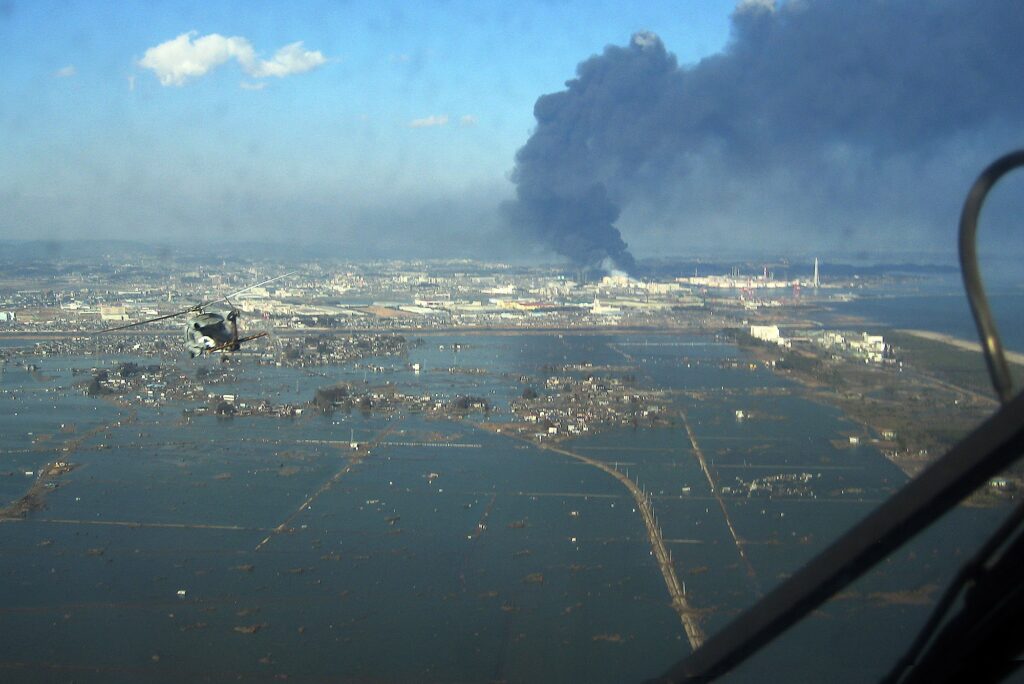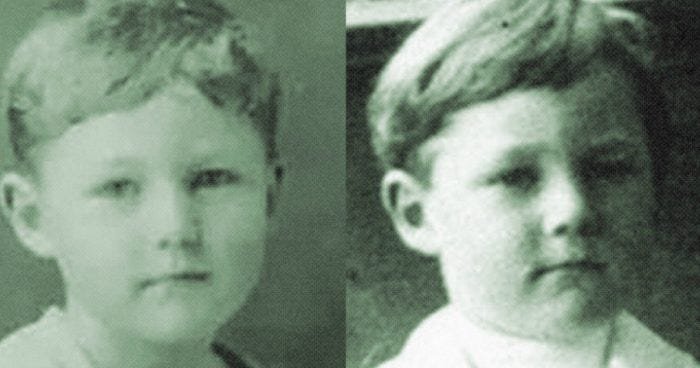On March 11, 2011, a 9.1-magnitude earthquake shook the island of Honshu in Japan.
To put that into perspective, anything greater than an eight on the magnitude scale can completely destroy communities close to its epicenter. A 10 is considered “devastating.”


The six-minute earthquake triggered a tsunami that would wreak havoc on the region of Tohoku, leading to the loss of over 19,000 lives. A great deal of these victims would never be recovered.
The devastating earthquake remains the fourth largest magnitude since records began in 1900.
The Disaster Begins
The disaster started when a thrust fault occurred. This is when plates of rock beneath the earth—also known as faults—collide. In this instance, the upper block, above the fault plane, moved up and over the lower block, causing an earthquake.
Japan is located where several continental and oceanic plates meet, which causes frequent earthquakes and explains the presence of many volcanoes and hot springs across the country.
On this occasion, a thrust fault occurred on the boundary between the Pacific and Eurasian Plate, causing a 9.1-magnitude earthquake at 2:46 pm local time on March 11, 2011.
The sheer intensity of the quake, which began almost 19 miles below the ocean floor, resulted in terrifying “shocks” reaching as far away as Russia and China.
The extreme thrust fault caused hundreds of aftershocks in the days and weeks after the quake, which only compounded the other effects of the main earthquake, namely the tsunami that followed.
The power of the tremors caused by the Pacific Plate advancing under the Eurasian Plate located near Japan saw the city of Sendai, the largest in the Tohoku region, engulfed in waves that reached 33 feet high.
Sendai is the capital city of Miyagi Prefecture and has over 1 million residents. The waves from the tsunami flooded buildings, homes, and the airport.
They reached as far as six miles inland, causing devastating damage not only to the low-lying areas but also to those who were considered safe from the effects of a tsunami.
The Natori River, located in central Miyagi prefecture, was flooded, causing long-lasting damage to the community.

Thousands upon thousands of lives were lost in the relentless walls of water that consumed large stretches of land. People were caught up in the unforgiving waves, with the possibility of escaping almost zero.
The violent waves drowned its victims and then eventually brought them back to sea. As a result, many of those who perished were never recovered.
Due to the high rate of seismic activity in the area, the people of the Tohoku region knew of the potential for tsunamis. After all, they had the past to learn from: earthquakes in 1611, 1896, and 1933 all caused tsunamis.
However, nothing of this magnitude had been known before, and nobody was prepared for the devastation.
One major effect of the tsunami was that it disabled the power supply and the cooling capabilities of three Fukushima Daiichi reactors.
Fukushima Daiichi was a nuclear plant home to many radiological hazards. The melting of the three cores—which only took a few days—caused a discharge of radioactive materials that contaminated the water that consumed the area surrounding it.
Residents who lived within a 12-mile radius of the plant were quickly evacuated.
Large parts of the cities Kuji and Ōfunato were destroyed. Rikuzentakata, a city in Iwate Prefecture, saw waves hitting the third stories of buildings.
The most severely affected locations were naturally those on the coast. This meant much of the destruction was 420 miles across the coastline, from Erimo to Ōarai.
Those who lived near the coast could see the terrifying whirlpools created by the tsunami.
Assessing The Devastation
It took a while for official figures to be released in terms of the death toll. In fact, the official figures were only released a decade after the disaster.
There were 19,759 deaths, 6,242 people badly injured, and as of 2021, still 2,553 people missing or displaced.

As you can imagine, many of these deaths were caused by drowning, which was estimated to be the cause of around 90% of fatalities.
The second leading cause of death was burning, and the third was being crushed or hit by heavy falling objects.
Then there were the casualties from the radioactive water in Fukushima: there was one suspected fatality from lung cancer caused by radiation exposure.
Then, there were an estimated 1700 evacuation-related deaths, primarily among the elderly who didn’t fare well in the hurried upheaval.
There were six people diagnosed with cancer or leukemia after their exposure to the radiation, and 16 people were injured at the power plant due to hydrogen explosions.
In the immediate aftermath, over 300,000 people were displaced without access to food, water, medicine, or shelter. Children were separated from their families, many at school during the earthquake.
Partners and loved ones were ripped apart from one another, the tsunami forcing them to different parts of their city, unaware if the other was alive or not.
The injuries and illnesses related to nuclear exposure or the leaking of radioactive water in Fukushima are challenging to assess and trace.
Plus, many on-site plant workers have since refused health checks, making it hard to ascertain if the radioactive water, as hazardous as it was, had long-lasting effects.
Out of all the population affected, those aged 60 or over accounted for over 65% of deaths. Many deaths occurred after the tsunami, either caused by injury or stress from the disaster.
The fact that the hospitals in most areas were out of operation meant those who needed immediate treatment were unable to get it, thus causing their death, which likely wouldn’t have occurred had treatment been available.
The vast majority of deaths occurred in Fukushima Prefecture, in part due to the nuclear disaster. Due to the sheer amount of bodies, the government ordered the military to bury many of the deceased in mass graves with no ceremony.
Their loved ones were promised that they would be given a proper funeral at a later date.
More than 123,000 houses in Japan were destroyed, and almost a million more were damaged. Nearly all houses affected were damaged by the tsunami, not the earthquake.
The cleanup and rebuilding of the affected areas wasn’t just emotionally overwhelming and draining; the financial costs were immense, too.
The costs resulting from the earthquake and tsunami in Japan alone were estimated at 220 billion USD, which is in excess of three billion yen. This makes it the most expensive natural disaster in history, far exceeding the 2014 Indian Ocean tsunami, which reached costs of USD 10 billion.
Despite most of the devastation remaining in Japan, damage was reported in Hawaii (to the amount of $31 million), and Peru, Chile, and the Galapagos Islands also reported damage from the effects. There was even one casualty in California and another in Indonesia.
The effects of the earthquake and tsunami were undeniably far-reaching. In fact, debris from the tragedy reached as far as Oregon.
In Oregon, four years after the event, authorities discovered debris from a boat destroyed during the tsunami. Inside the cargo container was a yellowtail kingfish, a species of fish from Japan.
It was very much alive upon the discovery and exposed just how much debris from the event is likely still in the Pacific Ocean.
Learning From The Tragedy
Seismologists are scientists who study earthquakes and other seismic activity, like volcanic eruptions and the movement of tectonic plates.
Still, the earthquake came as a surprise to seismologists despite them tracking the plate movements in anticipation of a potential quake.
They believed that the region of Tohoku would never have an earthquake above eight on the magnitude scale.
Despite being wrong about the 2011 earthquake, it offered these seismologists invaluable data about the event and how it took place.
This data will be used to improve future monitoring of tectonic plates, improve technology to detect the quakes early enough to facilitate evacuation, and better prepare the Japanese people for such an event.
After all, due to a lack of education, it was found older men, in particular, refused to move from their homes in low-lying areas, thus resulting in their demise.
Their lives may have been spared if they knew more about the dangers of earthquakes and subsequent tsunamis.
From 2012 to 2013, the Japan Trench Fast Drilling Project drilled down to the fault zone to analyze the properties of the fault that caused the disaster.
This study aimed to gather more knowledge of the plates and understand their mechanisms better. The quake remains the most powerful ever recorded in Japan.
Sources
https://www.livescience.com/39110-japan-2011-earthquake-tsunami-facts.html
https://www.livescience.com/27773-how-japan-s-2011-earthquake-happened-infographic.html
https://www.ncei.noaa.gov/news/day-2011-japan-earthquake-and-tsunami
https://www.britannica.com/event/Japan-earthquake-and-tsunami-of-2011













Leave a comment